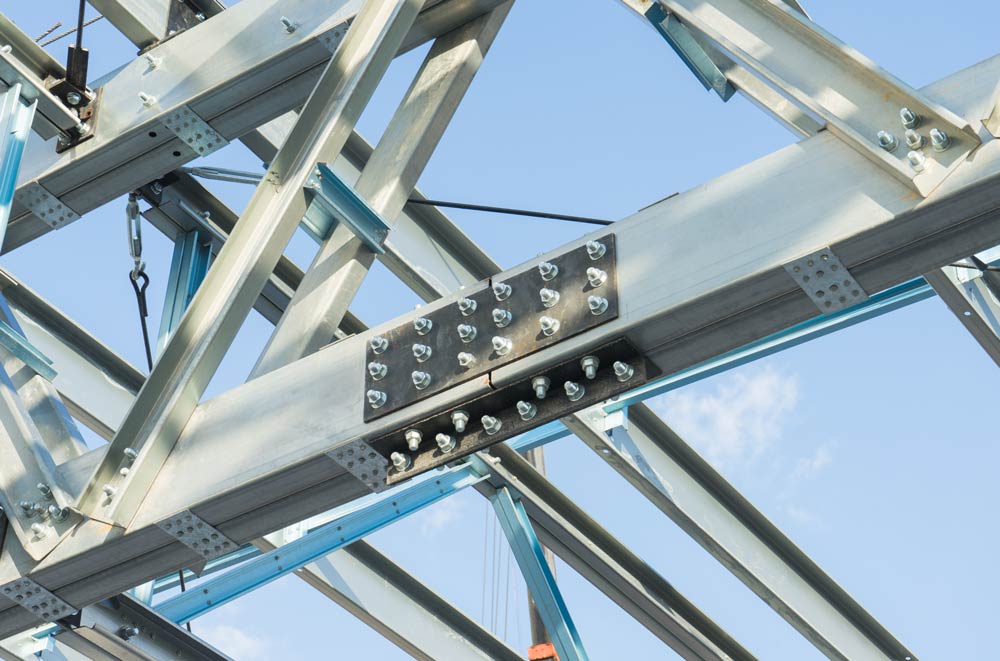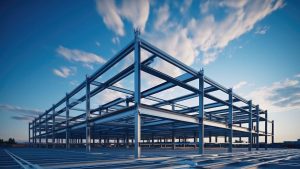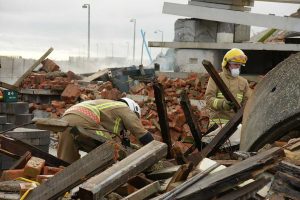You have chosen your steel building due to its strength and ability to withstand British weather. These buildings are affordable and extremely safe, especially when well-designed, engineered and constructed. They protect from weather elements, intruders, pest infestation, and the like. You can also tweak them to meet their owner’s environmental and protection requirements. However, some input in protecting your steel building will continue to see the structure be the good investment you expect.
Oxidisation Protection
One of the chief problems that can face a steel building is oxidisation. This is a natural process, often known as metal corrosion, which affects many metals producing rusting, flaking and scaring. Over time this process can weaken metals with no protection against the elements. With steel corrosion, you can find surfaces, crevices, and pitting.
Oxidisation occurs at a molecular level when oxygen and steel exchange electrons. Water is an essential part of the process, especially salt water. When oxygen exchanges electrons, it substitutes the positive iron ions in the steel with negative ions. The result of this chemical process is the formation of iron oxide or rust. Once formed, it stays, usually on an exposed area, and builds over time.
This knowledge is particularly pertinent for those placing steel buildings along the seaside or coastal areas or if your area is known for its wet weather. Iron oxides have a powdery appearance with a red-brown colour. If your steel building is starting to brown, chip or blackens over time, it is probably suffering from oxide corrosion. There are several preventative options to maintain your steel building, and some start before you even purchase the structure.
1: Good Design
Your building’s design matters when it comes to preventing rust; the building needs to have good drainage breaks, ensuring no dust or water traps occur. In addition, a fast airflow around vulnerable areas of steel exposure can cause rusting, general staining and marking from dirt and debris, which can mar the appearance of your building.
2: Regular Maintenance
Cleaning and renewing with protective substances can prevent small outbreaks of steel oxidisation from spreading further. Regular checks of your steel building also help spot any problems while they are still small enough to manage.
3: Powder & Acrylic Paint Coatings
This is the most used method to weatherproof steel, giving it a new thick coat of waterproof paint every 5 – 10 years. Powder and paint coatings have been used on metal bridges since their inception. Using acrylic, vinyl, epoxy or other substances for the coatings makes it harder for water and air to reach the steel. Polyurethane coatings are strong, have UV resistance, and are a cost-effective way of protecting your steel building. At National Steel Buildings, a powder & paint coating can be applied in a colour of your choice.
4: Galvanisation
This process is a long-term solution for your building and occurs before purchasing the steel building or steel building kit. At National Steel Buildings, we galvanise our cold-rolled steel frames. Our hot-rolled steel frames can also be post-galvanised.
For practical purposes, the tendency is to galvanise high-risk areas such as roofs, plate barriers and external support beams. Galvanisation is done by placing the steel in a bath of molten zinc and then left to cool. This added zinc coat is a decoy in that it gradually oxidises, first protecting the steel underneath its coating. A zinc coating has a life expectancy of 50 years. So galvanising your steel building will see it outlive you, as life expectancy is up to 100 years. However, it is difficult and costly to galvanise with hot zinc once the steel is in position, so this should be a decision made before purchase and construction.
5: Wind, Snow & Water Protection
One of the many reasons steel buildings are chosen is that they can withstand a lot more elemental exposure than traditional wood or concrete structure. In addition, the ductility of steel and its tensile strength helps to withstand gale-force winds, storms and snow pile-ups in winter. In areas prone to heavy snowfall, you should pay attention to how the wind blows the snowdrifts. Plus, the shape and pitch of the roof and any accessories might help prevent snow from building up on or around your building.
Protection starts before problems hit. Decisions need to be made prior to purchase. Selecting the right quality steel for your building is essential. This is where National Steel Buildings can help you. Our expertise and experience in steel buildings cover all aspects of the building, from the type of steel used to its design, construction and maintenance. Whatever your desired use for the steel building and wherever you want it situated, we can help ensure you get and keep your quality steel building for a very long time.




